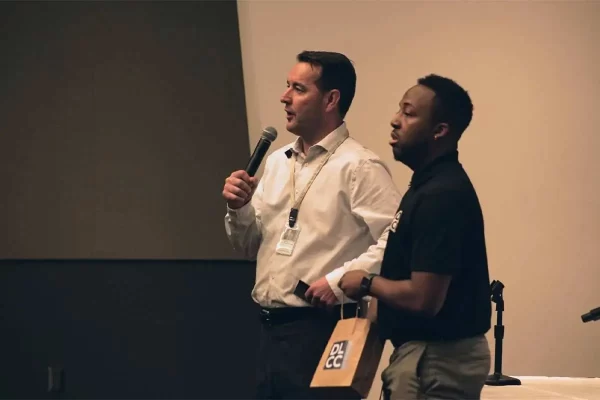With enhanced communications and faster shipping methods, participating in overseas tradeshows is becoming a greater necessity for exhibitors. But taking part in events overseas comes with a new set of logistical challenges for tradeshow shippers, starting with how much time it takes to transport exhibits.
“A good rule of thumb is 60 days for ocean vessel and 30 days for air freight,” said Carmen Otwell, owner, Show Freight International. “This doesn’t mean you will need all this time just for the actual transport. Most actual ocean transit times fall well within 45 days, and air freight moves within 10 business days – even to remote ports of entry. But customs-clearance issues, labor issues, inland freight transit times, weather, embargos and even holiday schedules all impact your timeline. My advice is, if you know you are going to a show overseas, reach out to your carrier as soon as possible. Detailed advance planning saves money.”
That detailed planning includes knowing what can be shipped overseas and how.
“The Transportation Security Administration (TSA) has regularly revised and changed the rules surrounding ‘known shippers,’” said Drey Lucibello, CEO, Champion Logistics Group. “Air freight forwarders are held to strict security restrictions regarding documentation, building security and more. While most of the work has been behind the scenes, people should know that the process of moving air freight has been completely revised since 9-11.”
While federal regulations must be abided, intended cargo also must be viable for its intended conveyance.
“Over the years, the airlines’ use of wide-body aircraft has diminished greatly, which has made it more difficult to move oversized pieces,” said Lucibello. “There are even greater restrictions on hazardous material, and no exposed metal.”
Detailed advance planning can take a great deal of time. But when done properly, exhibitors often are rewarded with increased exposure and expanded business opportunities in new and often times growing markets. And shipping exhibits to tradeshows overseas can be a relatively simple matter when compared to shows in the United States.
“Most countries overseas see tradeshows as a very vital part of their economy and they actually make things easier as a normal process,” said Greg Keh, vice president, TWI Group. “They take out the bureaucracy, and this actually helps the events. The experience can be much more efficient than in the United States.”
Ensuring efficiency with overseas transportation of tradeshow materials starts with choosing the right carrier, preferably one approved by the TSA.
“Ensure your carrier is Homeland Security TSA-approved. Your carrier should be able to set up your shipper status with the TSA to allow for the most economical airfreight shipping options available,” said Otwell. “Without this TSA designation, not only is it likely you will end up paying more than you should, in some situations you can end up having your shipment refused for transport. Remember, each country is different. If you have a tour involving more than one country, be sure your carrier can effectively navigate the security requirements of each.”
While TSA regulations can be restrictive on movement, but the additional oversight also helps keep tradeshow transportation loads secure from theft and other potential perils.
“The TSA and the regulations on transporting air freight and ocean freight now are so specific that the environment is much more secure. The availability or the opportunity for theft is much lower,” said Keh. “Not only is the freight process much more regulated, companies are vetted and employees are vetted. We must make sure we work with companies and employees that have accountability. So the trickle-down impact is so deep that really the opportunity for theft is narrow. It still happens, however. Proper packing is the key. You cannot lock up things easily in air freight or ocean freight.”
Once the right transportation company is selected, the process of preparing the actual shipment begins.
“As for special preparations, start with your customs invoice or even a packing slip detailing the items to be shipped as well as the pieces and weight of the shipment as packed or crated,” said Otwell. “This doesn’t have to be exact to get started. Ball-park the list to start the conversation. This will help determine the best mode of transport as well as allow your carrier to prepare the proper customs clearance documents and account for the appropriate time for transport and customs clearance.”
Exhibitors also need to know what kind of clearance and documentation they will require.
“I recommend an ATA Carnet for the booth and non-consumable items that will be re-exported within 12 months. An ATA Carnet is a passport for your booth,” said Otwell. “An ATA Carnet is accepted in 71 different countries and territories around the globe. Notably, Taiwan accepts a slightly different version, the TECRO/AIT Carnet from U.S. shippers.
“Ensure all items listed for entry are accepted in the destination country and properly coded. Finding out that your wonderful exhibitor giveaways are banned as imports in the host country is something you need to know before you ship and an improperly coded item can cause unnecessary delays,” said Otwell. “Even the containers themselves are important. Wooden crates and pallets must be fumigated prior to entry into many countries.”
And once a tradeshow exhibit arrives at its final overseas destination, moving the actual pieces to and from the tradeshow floor can be a simpler and more affordable affair than in the United States.
“Drayage overseas is much different. In Europe and Asia, since space in a huge issue, you will find that many stands are not modular and crated like U.S.-style systems,” said Keh. “Most European and Asian systems are based on a build-on-site basis, so freight is usually shipped much more compact, stacked and loosely loaded, not crated. This results in many service providers at a show not requiring drayage like in the United States. Exhibitor-appointed contractors and exhibitors can both handle their own shipments outside of the customs process.”
Participating in overseas tradeshows can be a rewarding experience when proper planning is done.
































